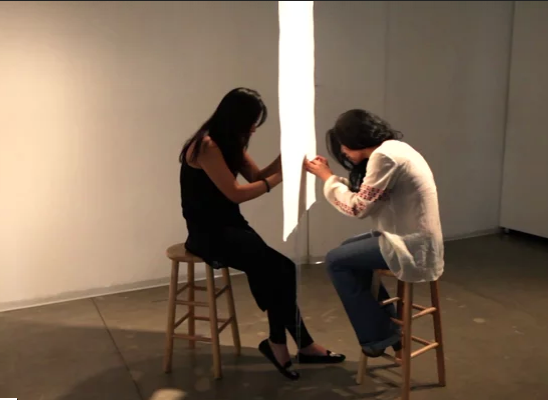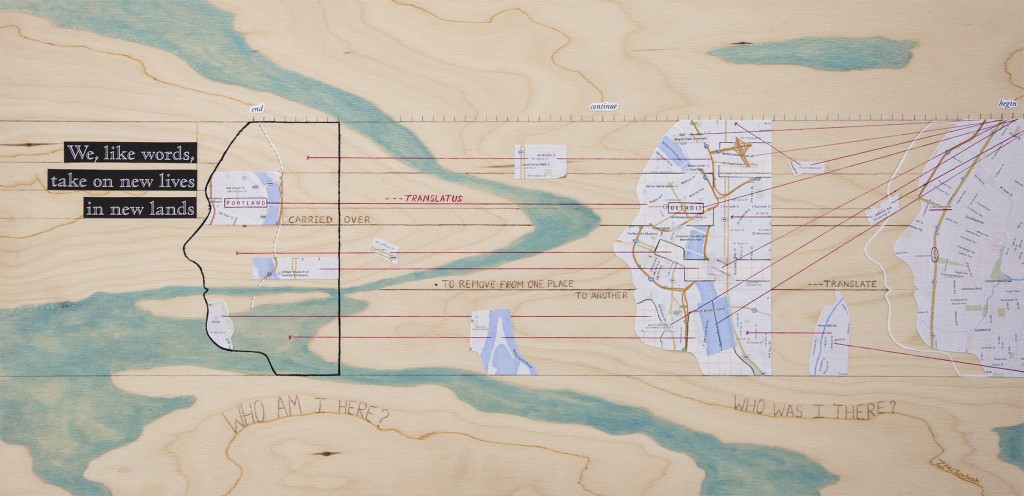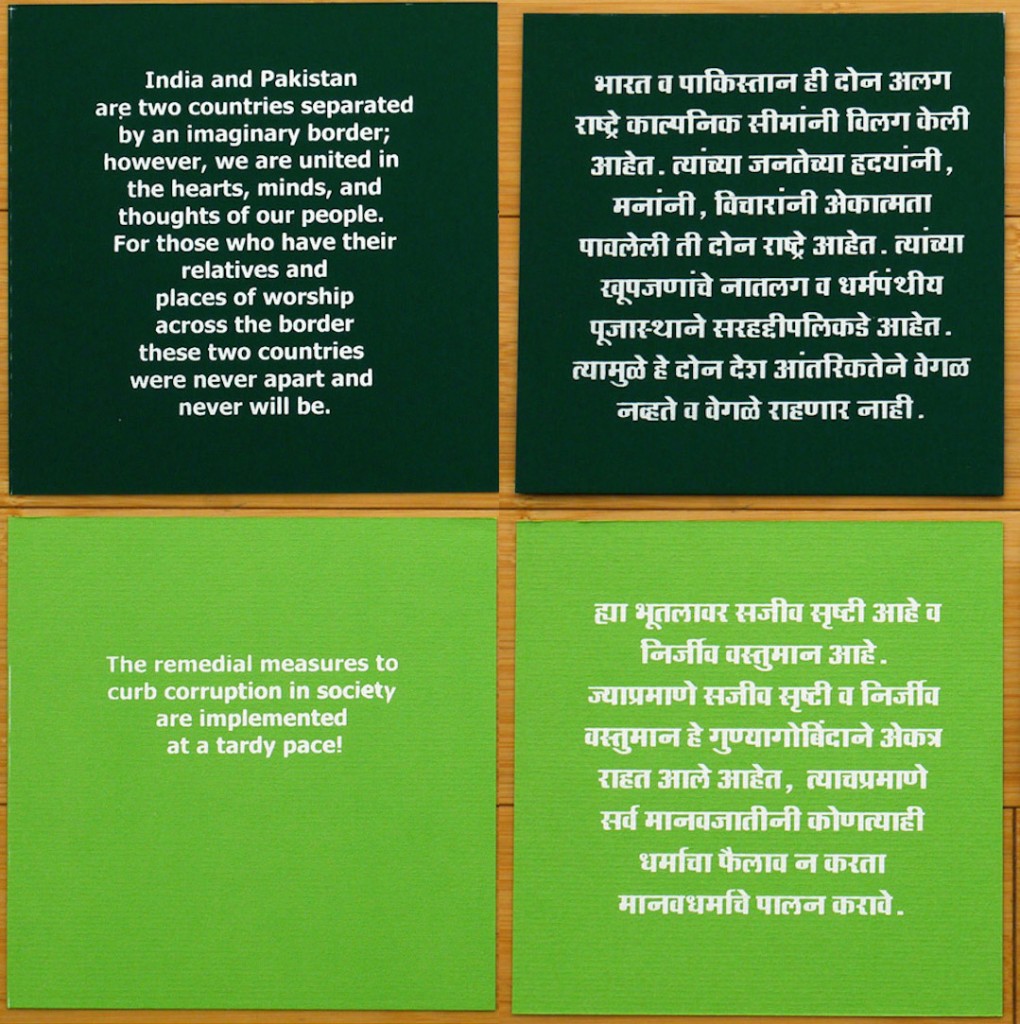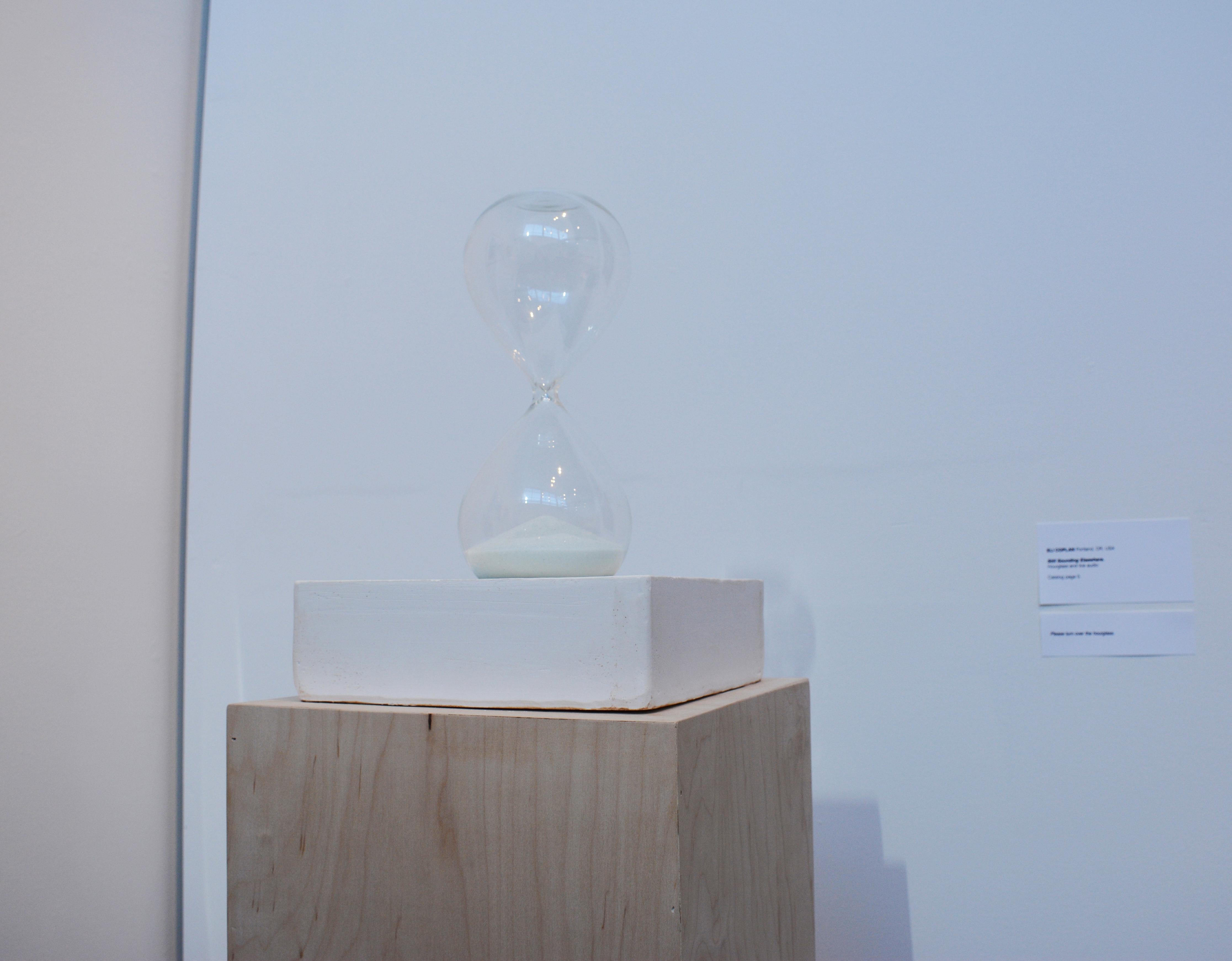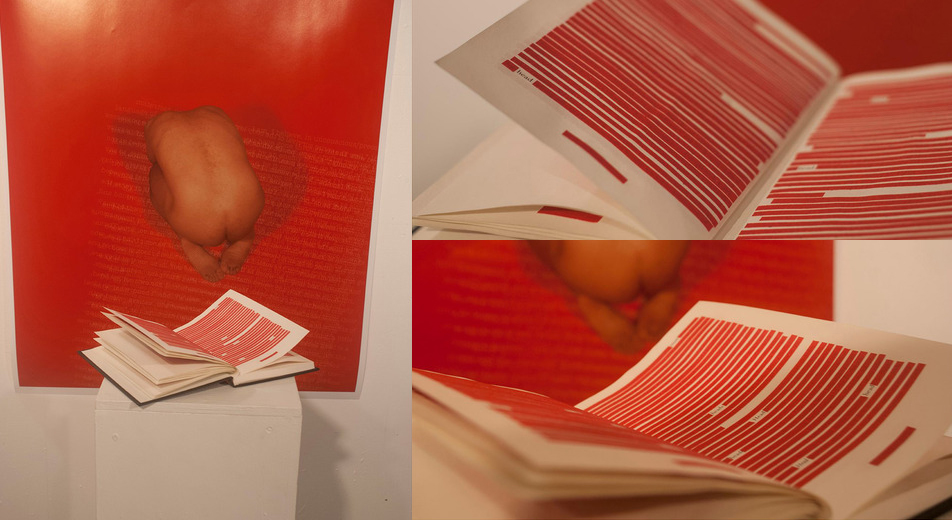Video Interviews with ‘Translations’ Artists
Interviews with artists featured in the Translations exhibition, Reed College, Portland, Oregon. The interviews are by Margaret MacLean, Junior student at Reed College.
Camella DaEun Kim, South Korea / Los Angeles, CA
“When I was young I had been traveling a lot, but when I turned ten I involuntarily decided to move to a different country and leave my country of origin. And when I say involuntarily, it was sort of a decision that my parents made and I didn’t have an opinion about it. I didn’t even think about it, it didn’t trigger to me. But then as growing up in this Western society as an outsider, because of the language and culture barrier, I think that is what still compels me to create work that is about overcoming these sort of barriers between cultures, and finding identity in this Western dominated society.”
"I think we’re in the 21st century there is a lot of communication, easy communication, very accessible to communicate with each other. But at the same time there is lack of communication existing on personal levels. And in that sense I think diversity is very important. It brings a curiosity with one another. What I mean is that with having this international communication you get to learn about others' perspectives. And you start to understand where they are coming from, how things are done in such a way, and that is I think the beginning point of really creating a sort of shared identity and community. "
The Ballad of East and West
The Ballad of East and West is a participatory performance work that transforms into a textile installation. The performance by the artist communicates beyond her personal struggle to find her identity in Western society. By encouraging her audience to sit across her to sew and contribute to her piece, it suggests many elements of human interaction with others, such as understanding, compromising, adopting, and forgiving. Engaging with others develops a dialogue that facilitates the creation of a shared identity (much as the work of art is a shared production). When the performance is finished, the work becomes an installation, which consists of 8136 holes, 4068 rows and 200 yards of thread. Threads are used to conceal words on the paper but they are of course symbols of connection, of binding, of tying together.
Lauren A. Bierly, New York, NY
“The first time I thought about really doing the series was when I saw Edward Munch’s painting The Scream. I had an emotional reaction to the piece and needed to leave the room because my professor was reading the text he [Munch] had written with the piece either before or after he had done the piece. And it was about him walking through the city and all of a sudden being overwhelmed by this red sky. And he kind of just felt like his being was changing because of this experience he was having. And I’ve had experiences very similar to that so I related to it and felt that I wanted to create this kind of effect for other people, but how to do that? And the best way was to take something that’s very innate to my person and create a visual from it which is this color dot series.”
Untitled (Emerson's Nature), 2013
Artist Statement:"Untitled (Emerson's Nature)" is the first in a series of color translation material studies— translating selected texts into colored dots, letter by letter, using grapheme-color synaesthesia as inspiration. The translated text for this artwork is Ralph Waldo Emerson's essay "Nature" published 1836. Artwork from this series of color translation studies places emphasis on mixing/matching color and material interaction with light.
Zachary Mcinchak, Portland, OR
“In the piece I wanted to reflect the desire to still have things that I was used to from home, but I also wanted to be open to new experiences and getting used to calling new things home, or associating them with home. So in the piece you can see that I have taken maps from the Detroit area and from the Portland area, and kind of fused them together. Some parts fit really well and other parts kind of don’t belong and they’re sort of set aside. I kind of wanted to show the process of letting new things go and also taking new things on.”
Translocation
Artist Statement: I depict the process of translating myself to a new region as a diagram moving right to left, or east to west, with Detroit area locales gradually (and sometimes harshly) being replaced with those of Portland. My life experiences form a personal grammar that develops as it moves from place to place over time. As I establish an identity in my new home, I shift between past and present experiences. To achieve balance, I must leverage the past and use it to inform—not dictate—my path going forward.
Cayla Skillin-Brauchle, Walla Walla, WA
What do you see is the value of connecting artists across cultures?
“As an artist who has been really fortunate to work in other countries, I realize that creative inquiry and the willingness to ask questions, and both the naiveté of asking questions, but also the honesty of asking questions, and the generosity in which they’re often answered, is a really amazing way to share experiences and build trust between each other. And so I think that when I think about a show like this or I think about the opportunity to show work globally or to work internationally, it’s that. It’s that we’re able to ask questions and give answers in a way that is honest and feels inquisitive and feels valuable.”
Everything is the truth.
Artist Statement: Everything is the truth is an English/Marathi artist book containing 24 crowd-sourced truths. A large group of Mumbai residents offered these often contradictory truths as part of the interactive, bilingual performance "Certifying the Truth", which took place in Mumbai, India in February 2013. Over the course of the 3-day performance I collected over 100 versions of these "truths", and through an editorial process chose 24 examples for this handmade artists book. Rather than a bound format, this box holds 24 loose cards with each "truth" in Marathi on one side, English on the other. The non-hierarchical format allows viewers to freely read either languages rearrange the "truths", or single out one "truth" as particularly compelling. The book’s conceptual form honors multiple authors, languages, and points of view simultaneously.
Eli Coplan, Portland, OR
“I guess I started off thinking super literally about translations, and translation just as a movement from one point to another, thinking about things like graphs. Like when you want to move an object graphically that operation is called a translation. So this kind of hyper-literal, but also abstract interpretation of the word. And I guess thinking about the way the sort of temporalities and modes of work that are associated with moving something from one place to another. So with this hourglass piece it takes an hour for the sand to go from the top to the bottom, and I guess I kind of think about it like a loading bar. So, when you’re waiting for something to load, there is this kind of perpetual waiting, but it has a start and a finish. So I like to kind of juxtapose the temporalities of an hourglass and a waterfall, so like a stream versus an episode.”
Still Sounding Elsewhere
An hourglass rests on a base fitted with a contact microphone, which amplifies the sound of the falling sand. The sound is meditative, continuous though intricate. Over the course of one hour, the sound becomes more and more distanced as more sand piles up. Visitors are invited to turn the glass over when empty, leaving a trace of their presence in the space. This atmospheric, minimally participatory performance piece was designed to coexist with others in a group show, and to instill the ambient space of the gallery with a sense of aliveness by briefly recording its recent inhabitation.
Farhad Bahram, Iran / Eugene, OR
What do you see is the value of connecting artists across cultures?
"I think part of the answer for that question showed up in the discussion that we had before [at the Translations roundtable discussion]. I think it is important to think about art as kind of a global language that could be understandable or readable in different cultures apart from culture and textual-based language. So no matter where you’re from, like if you’re from the Middle East or Europe or America, the art could just travel as a communicational fact between the people cross-culturally. And when we think about that role of art, I think it is important to consider the artwork as a medium that is coming from artists from different cultures. So the artwork may be cross-cultural or a medium that could talk in any kind of language to any kind of audience, but those persons who create these arts, all of them are coming from different cultures and from different countries, they speak different languages. During the process of making that work a translation happens because they need to translate from their own culture their personal concept, an idea that they have that is rooted in their own culture, and translate that into a global language of artwork. So this translation that ironically is the subject of this exhibition is actually always present in art practice. I think the importance of cross-cultural activities in art practice is actually evaluating this structure, what happens during this translation, when an artist from a specific culture creates a work that could talk with any other culture, how this process works and how this happens. Like an artist from Iran creates a work that could be readable or understandable or conceivable to an audience from the United States. What are the elements of this communication? I think having a cross-cultural activity, a cross-cultural work could address that issue. As someone mentioned in the talk, it could refer, actually make a reference to the work of art or general art practice as a savior of this kind of crazy world that we have, contemporary world. And how could art play a role of 'hero' or 'savior' in our current contemporary era. The answer to that question would be hidden inside those cross-cultural activities in art practice I guess."
The Representation
Artist Statement: Melanie Klein, the British psychoanalyst, believed that the first major act of translation for all human kind is when we learn to talk as a young child, and according to her the trigger for this act is nothing but loss! In a certain age, when the child realizes her own identity, separated from her mother, she falls into a depressive period caused by the feeling of loss and experiencing alienation and absence. During this depression she learns to cope with this loss by replacing the image of mother with a voice, by naming her. She also learns to translate her own needs to sound and words. In fact the incident of losing the joint identity of self and of the mother leans her toward the act of translation and also representation of a new identity. "The Representation" investigates a similar relationship between loss and identity by translating different mediums – such as text, book, photographs - and the body of the artist itself, into each other. With this work I explore the relocation of meaning from within the art object to the contingencies of its context and implications. By juxtaposition of these different mediums I engage the space as a new context for representation of identity in my work.
